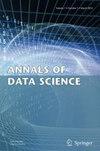Classification of Privacy Preserved Medical Data with Fractional Tuna Sailfish Optimization Based Deep Residual Network in Cloud
Abstract
Nowadays, with the growth of emerging technologies, increased attention has been paid to the classification of privacy-preserved medical data and development of various privacy-preserving models for the promotion of online medical pre-diagnosis systems. Medical data is highly sensitive and it is essential to ensure privacy of medical records from third-party users to increase service quality, satisfy patients and earn trust. The classification of medical preserved data is helpful to build a clinical decision system by classifying patients based on their disease and symptoms. In this article, a hybrid optimization-based deep learning model named Fractional Tuna Sailfish Optimization–Deep Residual Network (FractionalTSFO-DRN) is designed to precisely classify the privacy preserved medical data. A privacy utility coefficient matrix is used to ensure the privacy of medical data by generating a key matrix using Tuna Sailfish Optimization (TSFO) algorithmic technique. The privacy-preserved medical data is allowed for the classification process using DRN and the introduced Fractional TSFO is used to optimize and enhance the classification in DRN. The assessment followed by using heart disease prediction databases proved that the employed classification technique recorded an accuracy of 94.67%, a True Positive Rate of 93.56%, and a True Negative Rate of 89.68% respectively.

 求助内容:
求助内容: 应助结果提醒方式:
应助结果提醒方式:


